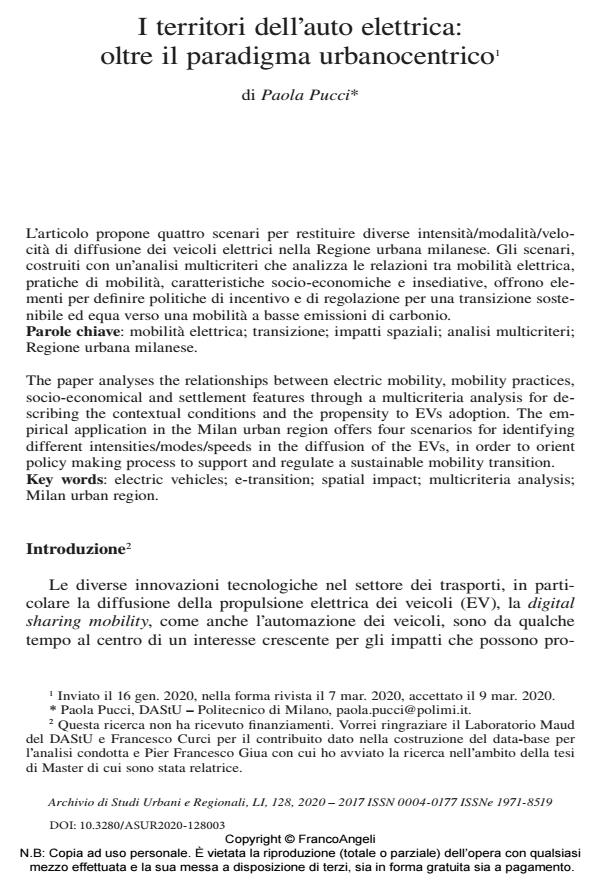I territori dell’auto elettrica: oltre il paradigma urbanocentrico
Journal title ARCHIVIO DI STUDI URBANI E REGIONALI
Author/s Paola Pucci
Publishing Year 2020 Issue 2020/128
Language Italian Pages 24 P. 14-37 File size 311 KB
DOI 10.3280/ASUR2020-128003
DOI is like a bar code for intellectual property: to have more infomation
click here
Below, you can see the article first page
If you want to buy this article in PDF format, you can do it, following the instructions to buy download credits

FrancoAngeli is member of Publishers International Linking Association, Inc (PILA), a not-for-profit association which run the CrossRef service enabling links to and from online scholarly content.
The paper analyses the relationships between electric mobility, mobility practices, socio-economical and settlement features through a multicriteria analysis for describing the contextual conditions and the propensity to EVs adoption. The empirical application in the Milan urban region offers four scenarios for identifying different intensities/modes/speeds in the diffusion of the EVs, in order to orient policy making process to support and regulate a sustainable mobility transition.
Keywords: Electric vehicles; e-transition; spatial impact; multicriteria analysis; Milan urban region.
Paola Pucci, I territori dell’auto elettrica: oltre il paradigma urbanocentrico in "ARCHIVIO DI STUDI URBANI E REGIONALI" 128/2020, pp 14-37, DOI: 10.3280/ASUR2020-128003